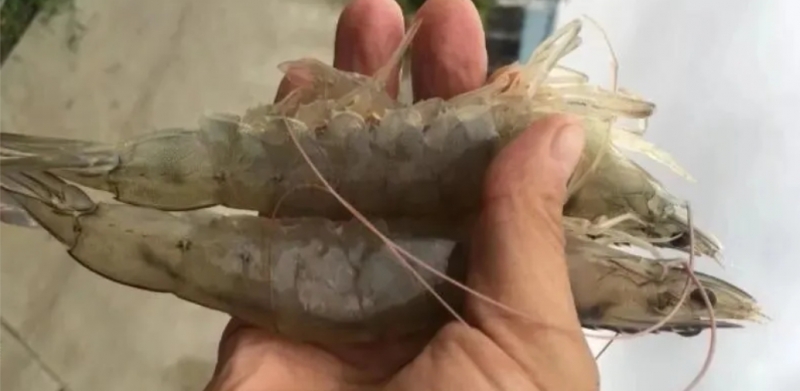News
How to raise shrimp well, change water bottom and scientific management is very important!

Raise shrimp first raise water, raise water first raise bottom. It is well known that plankton rich aquaculture water is more likely to produce healthy quality prawns, and good water quality depends on good substrate conditions, especially for the traditional shrimp pond model (as opposed to factory farming).
1. Fertilize water before you feed it
In terms of production, the water body with phytoplankton biomass less than 10mg/L is generally called lean water. In such an environment, the density of natural bait for prawn to eat is very low, and the increase of yield is largely dependent on artificial feed. The biomass of phytoplankton in the feishui shrimp pond was 50-200mg /L, and there were also high density of zooplankton in the pond, such as rotifers and water fleas, which were all high-quality food sources for shrimp seedlings.
For shrimp, it is appropriate to maintain the water fertility in semi-fertilized water or over-fertilized water, and the corresponding phytoplankton biomass is 100-300mg /L respectively. If this index is converted into transparency, it is between 25-40cm. It should be pointed out that although 30-40cm is regarded as the best transparency for shrimp culture in many materials, practice shows that 8-13cm is the best transparency for Penaeus vannamei culture water.
Before farming, the process of fattening water is very important. The pond should also be thoroughly cleansed and disinfected with drugs before the water is fertilized. Dibromohynin (20% effective bromine) can be used for disinfection when the effective bromine concentration in the water reaches 1mg/L, and povidone iodine, which is less toxic, can be used for disinfection.
When the toxicity of drugs disappears, you can use high temperature sterilization treatment after the farm organic fertilizer fertilizer. Can be placed in the organic fertilizer next to the pond exposure, its full oxidation, reduce oxygen consumption in the pond. Fertilizer water to organic fertilizer, supplemented by inorganic fertilizer, "catch both ends, with the middle", and organic fertilizer must be fermented, topdressing to a small number of times, less frequently applied.
2. Water should be transferred after fat water.
After the fertilizer water, some measures should be taken to prevent the deterioration of the water quality, that is, water diversion.
On the one hand, it can increase the amount of water change and the number of times of water change, but also avoid excessive bait casting. Whether you raise fish or shrimp, it doesn't mean that the more feed you put in, the higher the yield. The most appropriate approach is to estimate the daily consumption of feed according to the current amount of pond, and accurately feed every day to reduce feed waste, which can also reduce the pollution caused by water.
On the other hand, water quality can be regulated by biological water transfer products, such as beneficial activated bacteria and probiotics. Studies have shown that beneficial microbial preparation has many benefits, not only can promote the growth of shrimp, but also can enhance the resistance of shrimp and intestinal health, especially in the stage of shrimp standard seedling, the effect is particularly obvious. Probiotics and other products have been widely used in factory shrimp culture, which can effectively inhibit the outbreak of vibrio and reduce the incidence of disease. In outdoor pond culture, proecologics also have good effect, but the effect is not as obvious as that of factory culture.
Two, how to raise shrimp pond bottom?
At noon on a clear day, the phytoplankton in the upper water body of the shrimp pond will receive sunlight and produce oxygen. Due to poor light transmission, the lower water body cannot get oxygen supply. In the long run, this will lead to the accumulation of a large amount of oxygen debt in the sludge at the bottom of the pond, and the accumulation of toxic substances such as hydrogen sulfide will also increase. Therefore, proper bottom change is very important for the healthy cultivation of prawn.
Pond bottom quality can be improved from the following two aspects:
1. Use oxygenator wisely.
At noon on a sunny day in summer, the oxygen in the upper water body of the shrimp pond is often in a supersaturated state, while the lower water body is still hypoxic. Open the oxygen generator at 2:00 p.m. and let the oxygen from the upper layer supplement to the lower layer. The toxic hydrogen sulfide in the mud will be oxidized into non-toxic sulfur, and the oxygen debt at the bottom of the pond can also be alleviated.
Summer sunny afternoon, insist on opening 2-3 hours of oxygenator, help to improve the shrimp pond bottom quality.
2. Use chemical or biological agents to change the bottom.
The principle of changing the bottom of chemical agents is to reduce the oxygen debt at the bottom of the pool by releasing oxygen slowly and continuously in the silt, and the effective time is longer. Some drugs can continue to release oxygen for 5-7 days, and have various functions of changing the bottom, detoxifying and increasing oxygen, especially suitable for aging ponds.
At the same time, some beneficial microorganisms, such as nitrifying bacteria, photosynthetic bacteria, bacillus, lactic acid bacteria, can effectively reduce the nitrite, ammonia nitrogen, hydrogen sulfide and other toxic substances in the bottom of the pool.
As long as we master scientific management methods and adjust water quality and substrate quality, we can develop good shrimp and prawns!
Welcome to contact:+8618013418091(Whatsapp/Wechat)
+8618013418097(Whatsapp/Wechat)
 Alvin
Alvin hugh778
hugh778